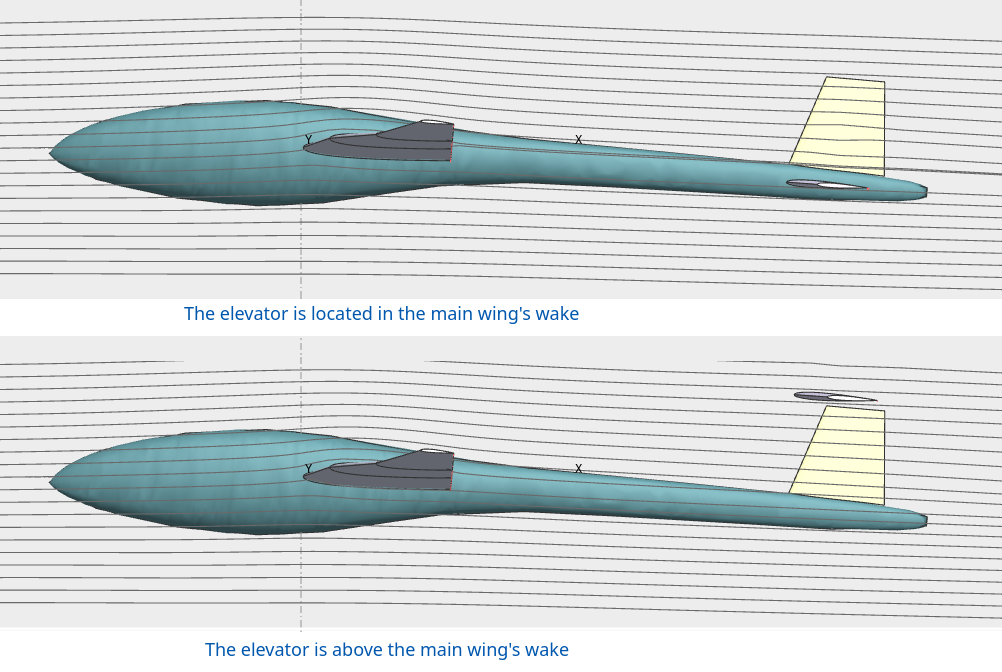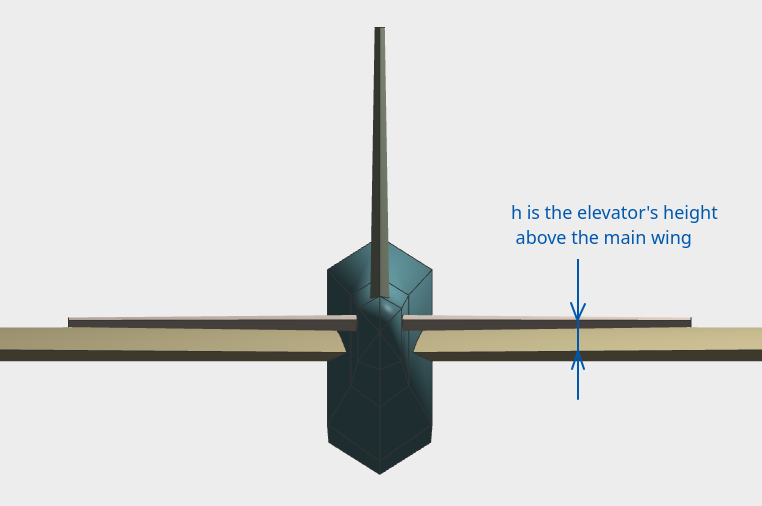
Analysis - Pitching moment
Updated May 16, 2021
------------------ WORK IN PROGRESS ------------------
Flow downwash
In panel methods, the moment acting on a part is calculated as the sum of the moments of pressure forces acting on each of the mesh elements.
One of the main contributor to the pitching moment is the moment of pressure forces acting on the elevator - after all, this is its main purpose.
Because the elevator is positioned downstream from the main wing, it can see a flow oriented downwards due to the downwash. For this reason, it can be a good idea to raise the evelator above the influence of the main wing's wake. The tool to analyse this in flow5 is the plot of streamlines, for instance in a vertical plane.

Numerical interactions
From the numerical point of view, strong numerical interactions can occur between the main wing's wake panels and the elevator panels as explained in the section Wake panels and wake roll-up. And as preliminary experience with flow5 has shown, this can be made worse by the presence of the fuselage.
If such numerical interaction occurs, the result is an incorrect evaluation of the pressure coefficients, of the panel forces and of the moments.
The cumulated influence of both effects can be seen in a plot of the pitching moment in the polar graphs.
To evaluate this effect, several configurations have been tested with elevator heights above the main wing ranging from 0 to 360 mm for a 3m span plane. In addition, a configuration with a V-Tail and one without a fuselage have been included in the analysis.
The project file is Cm_test.fl5.

The case with the elevator in the same horizontal plane as the main wing, i.e. h=0, failed to produce results due to viscous interpolation errors.
The graph below plots the pitching moment coefficients vs. the aoa for all the other configurations.
In this case, the influence of the numerical interactions become significant for heights less than 30mm.
On the other hand, the lift and drag which are not evaluated on-body but in the far-field plane are roughly the same for all configurations, which tends to show that they are not influenced by the local numerical interactions between panels.
Back to top
Recommendations and way forward
Based on the previous observations, it is preferable for the numerical evaluation of the pitching moment to offset the elevator from the main wing's plane, even if it means cheating somewhat with the geometry.
Curves exhibiting a non-linear behaviour of the pitching moement coefficent vs. the angle of attack are an indicator that parasite numerical interactions are occuring, which distort the results and make them unreliable.
The solution to this problem is the Vortex Particle Wake.
Back to top